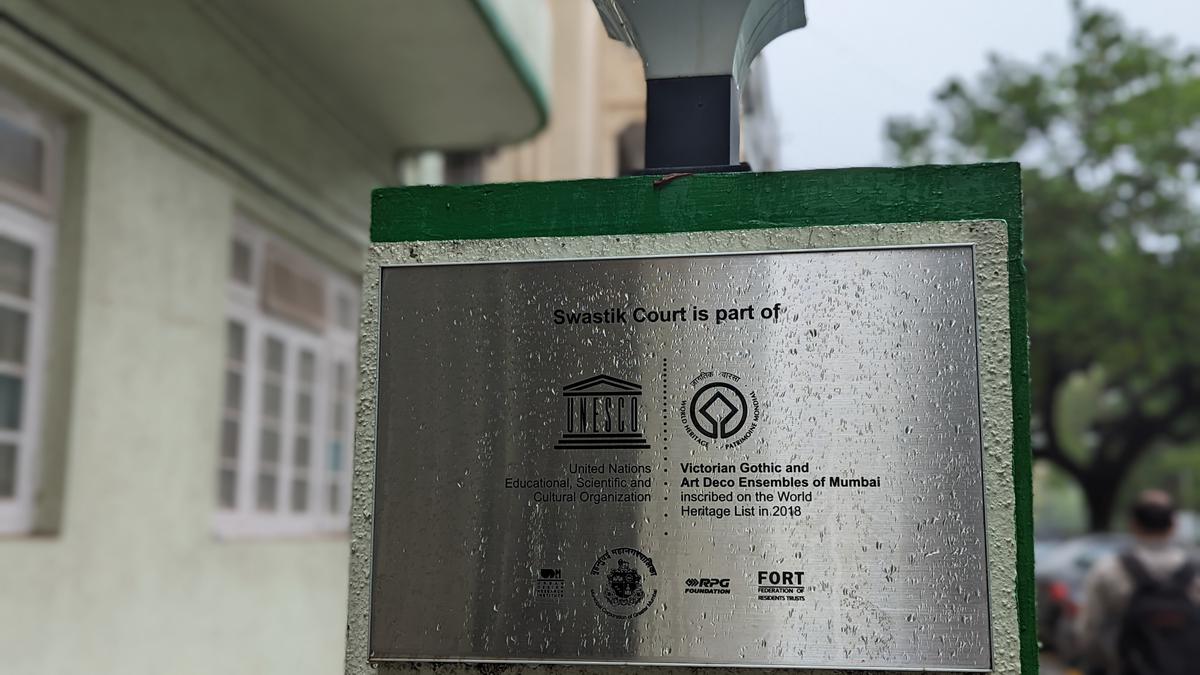
Know the Art Deco history of Mumbai
The Hindu
Art Deco Mumbai Trust is creating reels, videos. and photo stories to reach a younger demographic and promote the city’s UNESCO-recognised structures
When there is a mention of Mumbai — whether in movies or books — the visual that comes to mind is usually that of Victorian Gothic buildings like Chhatrapati Shivaji Maharaj Terminus.
But Mumbai also has one of the largest collection of Art Deco buildings in India; so significant that in June 2018, the Victorian Gothic and Art Deco Ensembles of Mumbai received the UNESCO World Heritage Sites tag. Mumbai’s largest site in terms of area and the number of buildings, it is a collection of 92 buildings spread over 66.34 hectares and constructed in four different architectural styles — Victorian Gothic, Neoclassical, Indo-Saracenic and Art Deco.
Of these, 76 structures identified as Art Deco buildings stretch across SP Mukherjee Chowk, Oval Maidan and Marine Drive. This massive ensemble has made it the second-largest collection of Art Deco buildings after Miami, USA. (Miami has over 800 such buildings recognised by the National Register of Historic Places, USA. )
When Art Deco emerged as a distinct style of architecture in Europe of the 1920s, it combined modern design with traditional elements such as chevrons, pyramids, florals, zig-zags, and other geometric shapes.
In erstwhile Bombay, Art Deco structures were commissioned in the 1930s by the then-Indian industrial elites like Framji Sidhwa, Shiavax Cambata, and K.A. Kooka. Art Deco buildings that line Marine Drive and the western flank of Oval Maidan were the first to be designed by a new generation of Indian architects like Gajanan Mhatre, Sohrabji Bhedwar, and P C Dastur. They were mostly residences that were uniform in height, with high ceilings and open balconies.
“In the second half of the 19th Century, the city witnessed urban planning projects with the construction of ensembles of buildings — Victorian Gothic buildings and then in the early 20th Century, Art Deco buildings — all bordering the Oval Maidan,” explains Atul Kumar, founder-trustee of Art Deco Mumbai Trust (ADMT) and member, board of directors, International Coalition of Art Deco Societies.
While ADMT is a not-for-profit that has been spreading awareness about Mumbai’s Art Deco heritage since 2016, the International Coalition of Art Deco Societies works towards preserving Art Deco and educating people about it.





















 Run 3 Space | Play Space Running Game
Run 3 Space | Play Space Running Game Traffic Jam 3D | Online Racing Game
Traffic Jam 3D | Online Racing Game Duck Hunt | Play Old Classic Game
Duck Hunt | Play Old Classic Game











